Your content team is drowning in research.
Someone's reading five papers. Someone else is searching Google Scholar. Another person is manually organizing findings in a spreadsheet. By the time you synthesize everything, half your team's time is gone and you're only 20% through the research phase.
This is the research bottleneck that kills content velocity.
At ThoughtCred, we build systematic thought leadership for enterprise AI companies. The pattern we see constantly: teams that move fastest aren't the ones with more writers. They're the ones with better research infrastructure. The right tools, strategically stacked, can cut your research phase from weeks to days.
This blog breaks down the 20 essential tools that form a modern research stack for content teams. Not every tool will fit your workflow, but understanding which tools solve which problems lets you build a stack that accelerates your specific needs.
Why Research Infrastructure Matters for Content Teams
Here's the reality: great content starts with great research, but great research requires great tools.
Without the right infrastructure:
- Your team spends 40% of their time just finding and organizing information
- Key insights get missed because they're scattered across documents
- Citation and attribution becomes manual and error-prone
- Different team members use different methods, creating inconsistency
- You can't reuse research efficiently across multiple content pieces
With the right research stack:
- Research accelerates dramatically (hours instead of weeks)
- Insights are captured systematically and organized automatically
- Citations and sources are tracked consistently
- Your team develops a shared research methodology
- Research becomes a reusable asset across multiple projects
The 20 tools below form the complete research stack. You won't use all of them—pick the ones that solve your specific bottlenecks.
Literature Review & Academic Research
1. SciSpace
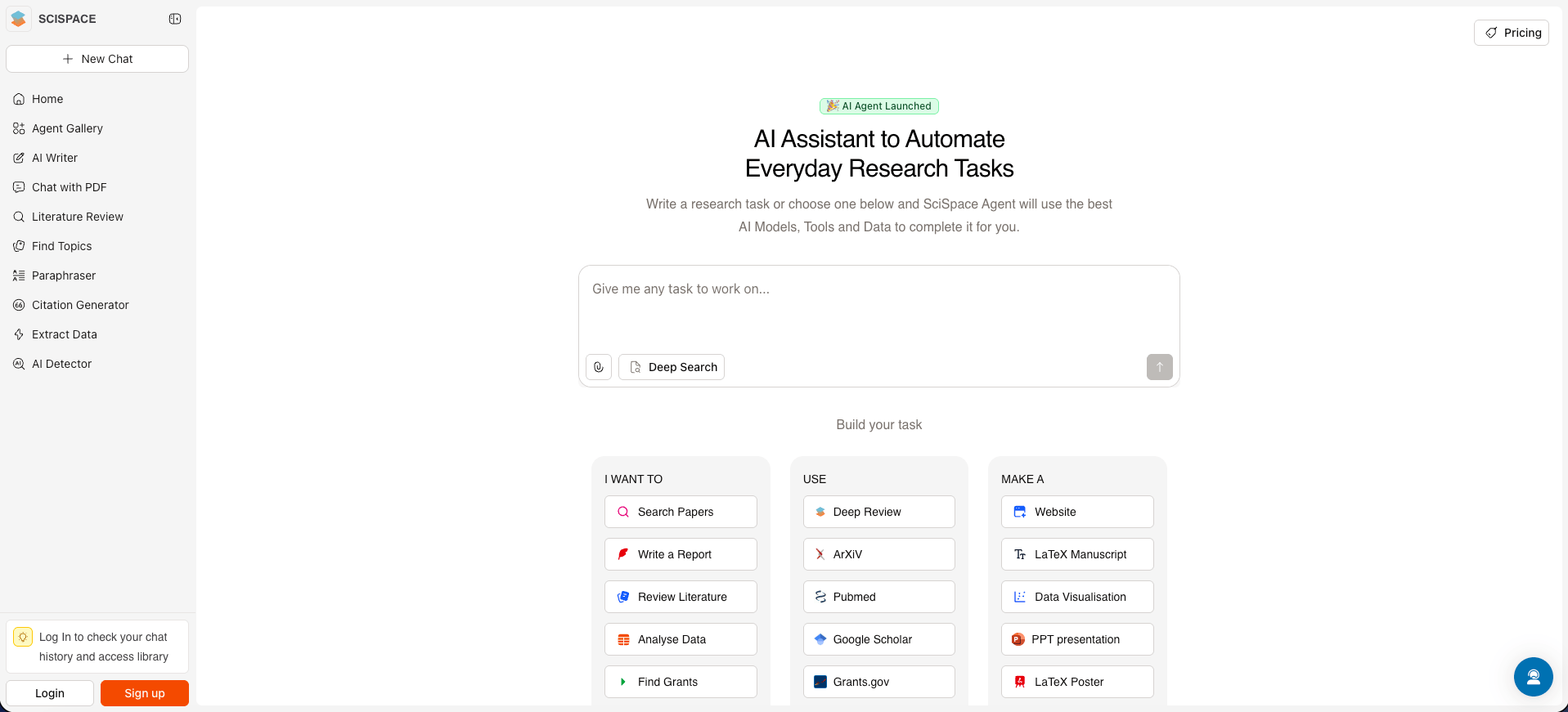
What it does: AI-powered literature review tool with PDF chat, citation generation, AI content detection, and paraphrasing specifically built for research teams.
Why it matters for content teams: When your whitepaper or blog needs academic credibility, SciSpace lets you upload research papers and have an AI assistant extract key findings, explain complex concepts, and generate citations automatically.
B2B content types it helps: Whitepapers, research reports, technical blogs, thought leadership pieces backed by academic research, case studies with research backing.
ThoughtCred's angle: We use SciSpace when building whitepapers that need to cite academic research. Instead of manually reading papers and extracting findings, SciSpace does the heavy lifting. Our team focuses on synthesizing and positioning, not transcription.
2. Elicit

What it does: AI research assistant that automates literature reviews and extracts key insights from academic papers at scale.
Why it matters for content teams: You can ask Elicit questions and it searches academic literature for relevant papers, summarizes findings, and identifies patterns across multiple sources.
B2B content types it helps: Deep research blogs, market trend analysis, whitepapers, thought leadership backed by data, competitive analysis.
ThoughtCred's angle: When we're researching market trends or technical concepts, Elicit accelerates the discovery phase. Instead of manually searching papers, we ask questions and Elicit brings back synthesized insights.
3. Scite

What it does: AI-powered citation analysis tool that evaluates scientific claims by tracking citation context and quality.
Why it matters for content teams: Before you cite research in your content, Scite tells you whether that research is being supported or contradicted by other papers. Protects you from citing flawed research.
B2B content types it helps: Research-backed whitepapers, technical blogs, market analysis, any content making data claims.
ThoughtCred's angle: When we're building positioning or claims around research, Scite ensures we're citing high-quality, well-supported research. It prevents us from accidentally citing papers that have been debunked.
4. Paperpal
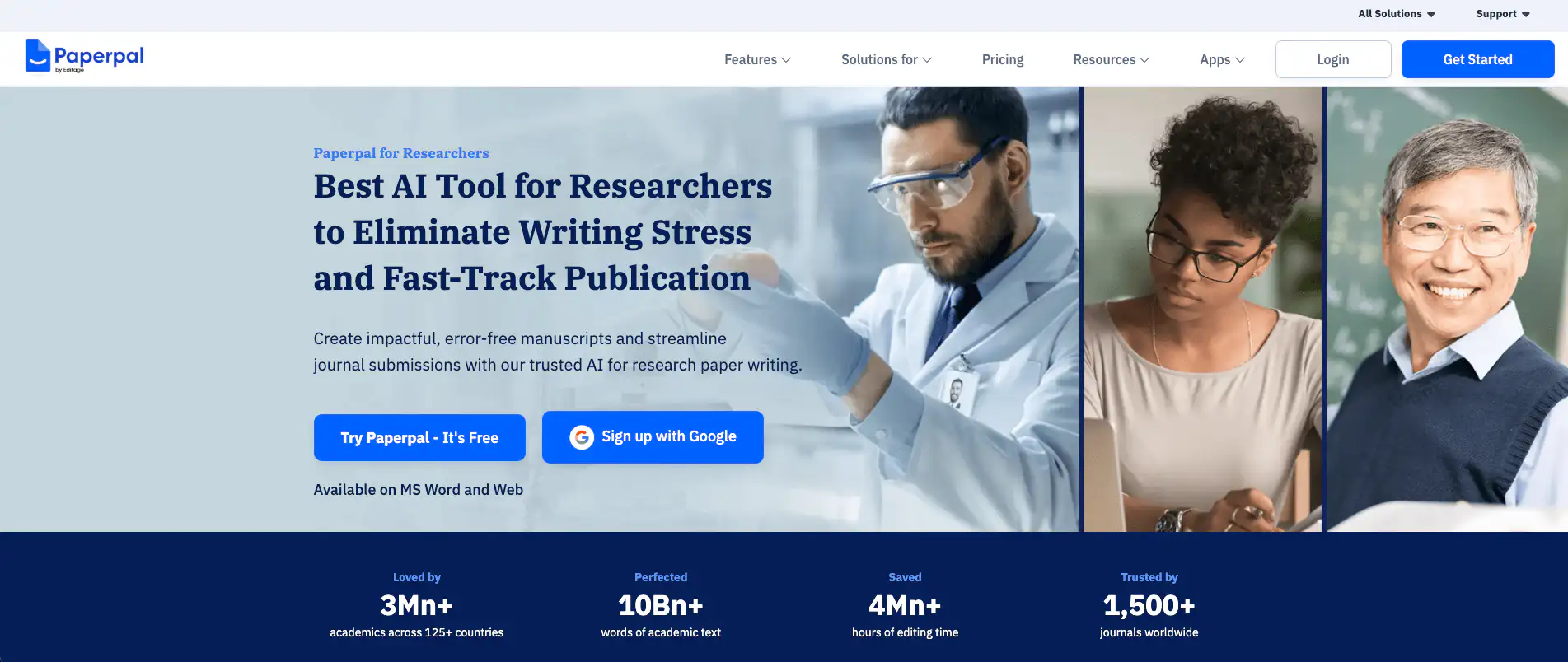
What it does: AI assistant designed to help researchers improve and rewrite academic papers efficiently.
Why it matters for content teams: When you're turning research into narrative, Paperpal helps improve clarity, academic tone, and structure. It catches what human editors miss.
B2B content types it helps: Research reports, technical whitepapers, academic-style thought leadership.
ThoughtCred's angle: We use Paperpal as a final polish layer on research-heavy content. It ensures academic credibility without reading like a dissertation.
Academic Discovery & Citation Management
5. Research Rabbit

What it does: AI-enhanced academic discovery platform that helps you find and track research papers and citation networks.
Why it matters for content teams: Instead of getting lost in Google Scholar results, Research Rabbit shows you related papers, cited-by relationships, and citation networks. It's like having a map of your research topic.
B2B content types it helps: Comprehensive research blogs, whitepapers, trend analysis, competitive positioning.
ThoughtCred's angle: When we're scoping a new research topic, Research Rabbit shows us the landscape. We can see which papers matter most, who's citing whom, and where the gaps are.
6. Connected Papers

What it does: Visual tool that maps academic paper relationships and research trends through AI graph mapping.
Why it matters for content teams: You get a visual understanding of how research connects. You can see seminal papers, related work, and future research directions.
B2B content types it helps: Research-driven thought leadership, market trend analysis, competitive intelligence, deep-dive technical blogs.
ThoughtCred's angle: When building a whitepaper framework, we use Connected Papers to understand the research landscape visually. It helps us see where our unique positioning fits.
7. Paperpile

What it does: Reference management software with AI features for research citation and bibliography management.
Why it matters for content teams: Organize all your research sources in one place. Tag, annotate, cite, and build bibliographies automatically.
B2B content types it helps: Any content with citations: whitepapers, research reports, technical blogs, competitive analysis.
ThoughtCred's angle: We maintain Paperpile libraries for each major research initiative. When we're ready to write, all our sources are organized and citable.
8. Zotero
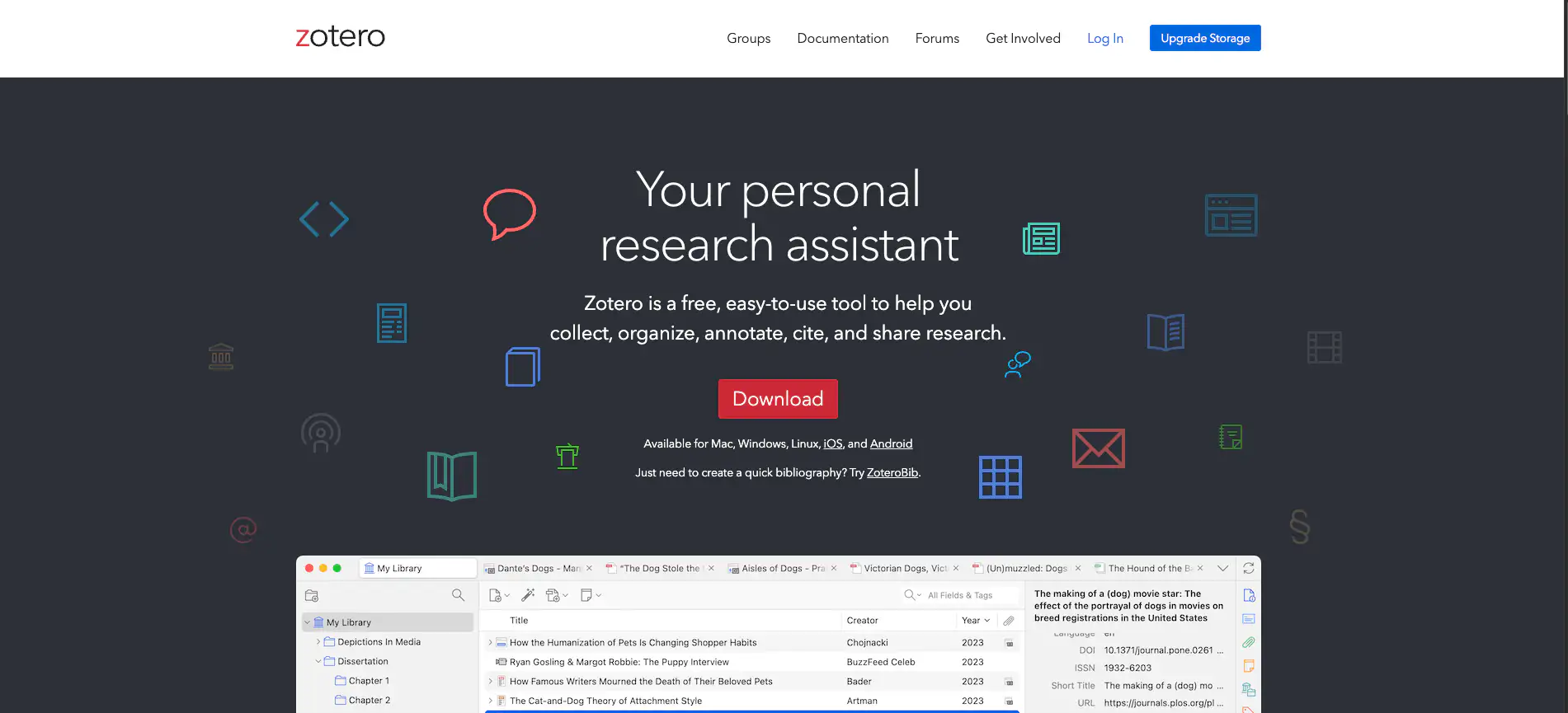
What it does: Free, open-source research tool to collect, organize, cite, and share research sources.
Why it matters for content teams: Similar to Paperpile but free and open-source. Perfect for teams on tight budgets or organizations that need flexibility.
B2B content types it helps: All research-backed content, citations, bibliography management.
ThoughtCred's angle: We recommend Zotero for clients who need citation management without subscription costs. It does the job well.
9. Mendeley

What it does: Academic reference manager with social network features and AI-based suggestions.
Why it matters for content teams: AI suggests related papers and researchers in your field. Community features let you see what others are researching.
B2B content types it helps: Research reports, academic-backed thought leadership, whitepapers, competitive intelligence.
ThoughtCred's angle: When exploring a new research topic, Mendeley's social features help us see what's trending in our industry and who's researching what.
Market & Competitive Research
10. Remesh
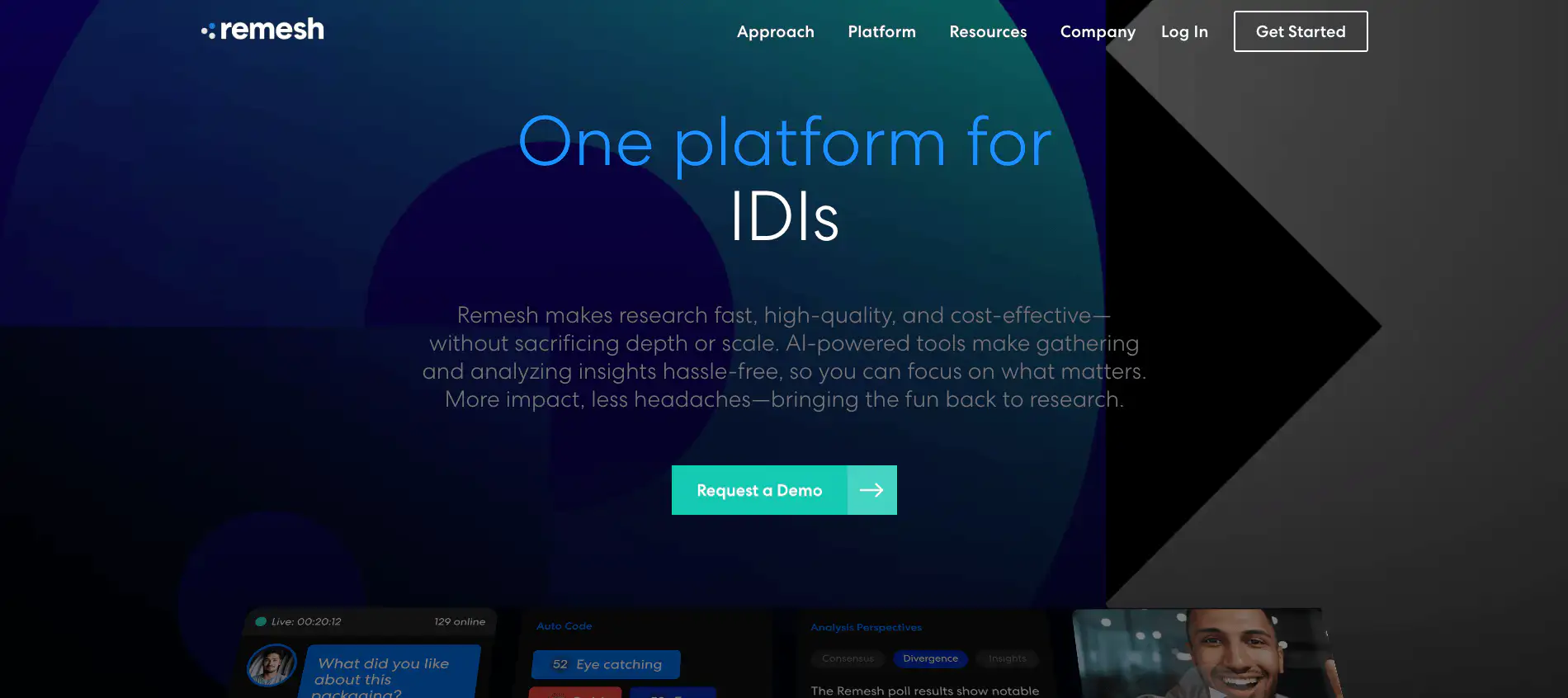
What it does: AI-powered qualitative research platform for analyzing customer interviews and feedback at scale.
Why it matters for content teams: Transform raw customer interview data into structured insights. Analyze sentiment, extract themes, and identify patterns without manual coding.
B2B content types it helps: Case studies, customer testimonials, thought leadership based on customer research, market analysis.
ThoughtCred's angle: When we're building case studies or customer-backed content, Remesh analyzes interview recordings and helps us extract the most compelling insights.
11. Consensus

What it does: AI search engine for scientific research that shows consensus from peer-reviewed papers.
Why it matters for content teams: Search scientific research and see consensus answers to your questions, backed by multiple peer-reviewed sources. No more debating what research says.
B2B content types it helps: Research-backed blogs, whitepapers, market analysis, thought leadership.
ThoughtCred's angle: When building claims, Consensus shows us the scientific consensus. It helps us position confidently knowing research backs us.
12. Ahrefs AI Helper

What it does: AI tool for competitive analysis and content benchmarking using SEO data.
Why it matters for content teams: Analyze top-ranking competitors instantly. See what content ranks, what they link to, and what gaps exist in the market.
B2B content types it helps: SEO blogs, competitive positioning, market trend analysis, content strategy.
ThoughtCred's angle: When researching a new topic, Ahrefs AI Helper shows us the competitive landscape. We see what's already ranking and where there's opportunity.
13. Surfer SEO

What it does: AI tool focused on content optimization using SERP data for improved search engine rankings.
Why it matters for content teams: Analyze top-ranking pages and get specific recommendations on what your content needs to compete.
B2B content types it helps: SEO blogs, informational content, educational pieces, how-to guides.
ThoughtCred's angle: When optimizing blogs for search, Surfer tells us exactly what we need: word count, structure, keywords, readability. We optimize data-driven, not guessing.
Workflow Automation & Synthesis
14. Stack AI

What it does: No-code AI workflow builder for automating research and data synthesis pipelines.
Why it matters for content teams: Build workflows where research inputs get automatically synthesized into outlines, key findings, or structured insights.
B2B content types it helps: Whitepapers, research reports, market analysis, any content requiring synthesis.
ThoughtCred's angle: We build Stack AI workflows that pull research → extract findings → structure → suggest angles. What took hours becomes automated.
15. Numerous.ai
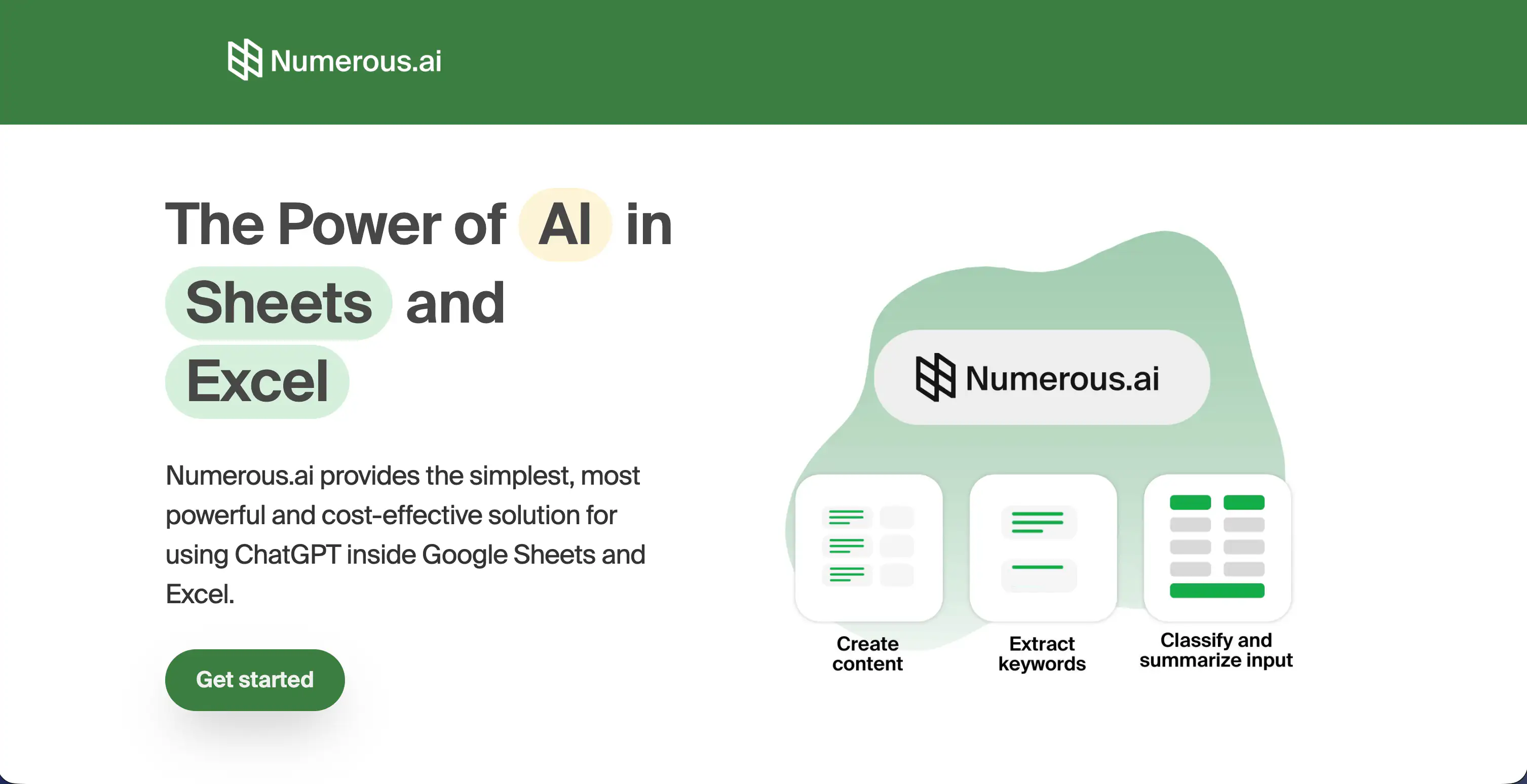
What it does: AI spreadsheet automation tool designed for content planning and data-driven content creation.
Why it matters for content teams: Turn spreadsheet research data into content automatically. Bulk analyze data, extract insights, generate variations.
B2B content types it helps: Data-driven blogs, case studies, competitive analysis, market reports with data tables.
ThoughtCred's angle: When we're analyzing competitive data or market data, Numerous automates the spreadsheet-to-insights process.
16. Recall

What it does: AI tool that summarizes lengthy videos and PDFs into searchable knowledge graphs.
Why it matters for content teams: Turn hours of webinars, conference recordings, or lengthy PDFs into searchable, structured knowledge instantly.
B2B content types it helps: Case studies from video content, webinar summaries, conference coverage, thought leadership from recorded conversations.
ThoughtCred's angle: When a customer does a webinar interview or we record research sessions, Recall turns that video into structured knowledge we can search and cite.
Perplexity: The Swiss Army Knife of Research
17. Perplexity AI

What it does: AI research assistant that answers complex research queries with citations from multiple sources.
Why it matters for content teams: Ask any research question and Perplexity searches the web, synthesizes multiple sources, and cites everything. This is where we start most research projects.
B2B content types it helps: All content types benefit from Perplexity as a research starting point.
ThoughtCred's angle: Perplexity is our first tool in every research workflow. It gives us the baseline understanding and key citations we build on.
How These Tools Work Together: The Complete Research Stack
Don't use all 17 tools. Instead, build a stack based on your research needs:
For whitepaper research:
- Start with Perplexity for baseline research
- Use Elicit for academic findings
- Verify claims with Scite
- Organize in Paperpile
- Synthesize with Stack AI
For SEO blogs:
- Start with Perplexity for topic research
- Analyze competition with Ahrefs AI Helper
- Optimize with Surfer SEO
For case studies:
For research discovery:
- Use Research Rabbit to map the landscape
- Visualize with Connected Papers
- Verify consensus with Consensus
The right stack depends on your content type and research depth. Start with 2-3 core tools that solve your biggest bottleneck. Add more as your workflow matures.
The Real Insight
The difference between fast content teams and slow ones isn't usually the writers. It's the research infrastructure.
Fast teams have:
- Clear research workflows
- Tools that integrate and automate
- Reusable research across projects
- Consistent citation and source tracking
- Ability to scale research without scaling headcount
Slow teams are doing research manually. Reading papers by hand. Copying citations. Organizing findings in spreadsheets. Every project starts from scratch.
A good research stack compresses weeks of work into days. It lets your team focus on the thinking and synthesis instead of the grunt work.
What Next
If your team is drowning in research, start here:
- Identify your bottleneck. Where does research take the most time?
- Pick 2-3 tools that solve it. Don't try to implement 20 tools at once.
- Build a workflow. Document how these tools connect.
- Train your team. Make it standard process, not optional.
- Measure impact. Track how much faster research becomes.
Most teams see 50-70% reduction in research time after implementing the right stack.
Ready to Build Your Research Infrastructure?
If research is your bottleneck, you don't need more writers. You need better tools.
ThoughtCred helps enterprise AI companies build research-driven thought leadership. We design research stacks, implement workflows, and train teams on tools that actually accelerate content production.
Let's talk about your research stack — or explore our success stories to see how enterprise AI companies have compressed their research cycles and scaled content production using the right tools and workflows.





.svg)